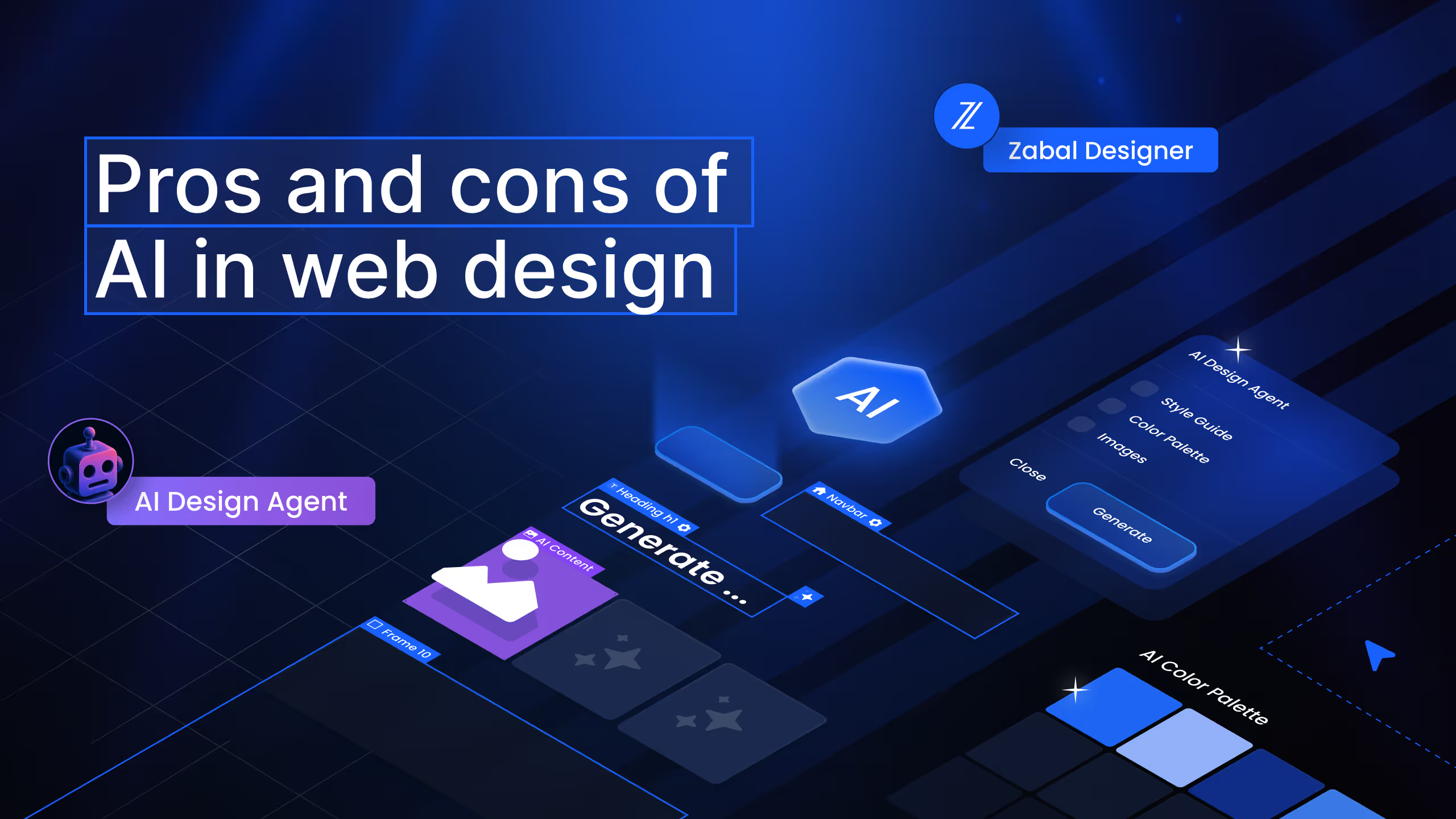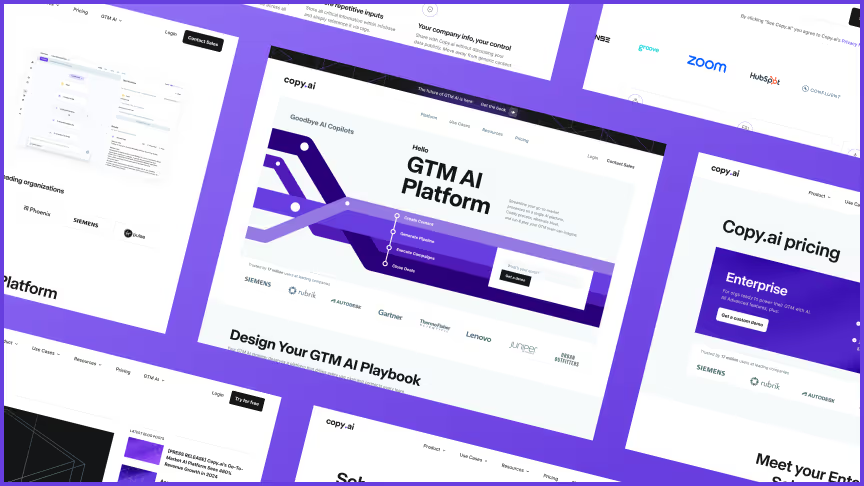2025 Guide to AI in Web Design
Discover the role of AI in web design: tools, benefits, drawbacks, and Zabal Media’s point of view on using AI responsibly for SaaS and enterprise brands.
.svg)
The danger isn’t that AI will replace designers, it’s that it will replace differentiation. At Zabal, we use AI only where governance and brand integrity are guaranteed."
AI isn’t a “someday” thing anymore; it’s already transforming how websites are designed, built, and experienced. The numbers tell the story: in 2025, 93% of web designers report using AI tools in their workflows, and more than half of clients (55%) now support AI’s role in web projects (Hostinger). Beyond design, SaaS companies are rapidly embracing automation. By 2025, 50% of SaaS providers will have integrated AI into their platforms for analytics, personalization, and operational efficiency (Zylo).
The shift isn’t limited to design outputs. In UX research, 58% of teams now rely on AI research tools, with over one-fifth (21%) applying them in most or all studies (Askable). Designers and developers are split on impact: Figma’s 2025 AI report found 82% of developers believe AI improves quality, while only 54% of designers feel the same, a sign that adoption is strong, but confidence in outcomes varies by discipline (Figma).
And yet, enterprise adoption still comes with caveats. According to Gartner, CEOs now see AI as a transformative force for retooling operating models and people strategies, but they also flag concerns around IP risk, bias, and compliance. Forrester goes further, arguing that generative AI needs design and will transform it, but warns that success depends on integrating design discipline and human oversight at every stage.
For B2B SaaS and enterprise brands, the implications are clear: AI enables faster launches, cost savings, and broader creative possibilities, but without strategy and governance, the risks are generic, cookie-cutter websites or worse, compliance and security failures.
At Zabal Media, we’ve been watching this shift closely. As a Webflow Enterprise Agency, our clients trust us to deliver design that’s innovative, reliable, and enterprise-ready. We believe AI has a role to play in that future, but only if it’s applied with intention, strategy, and a human-first mindset.
What AI Tools Are Available for Web Design (and the Wider Web Ecosystem)
AI isn’t a single tool; it’s a constellation of platforms reshaping how designers, developers, marketers, and growth teams collaborate. For SaaS and enterprise brands, that means evaluating not just design tools, but also content, SEO, personalization, and automation capabilities.
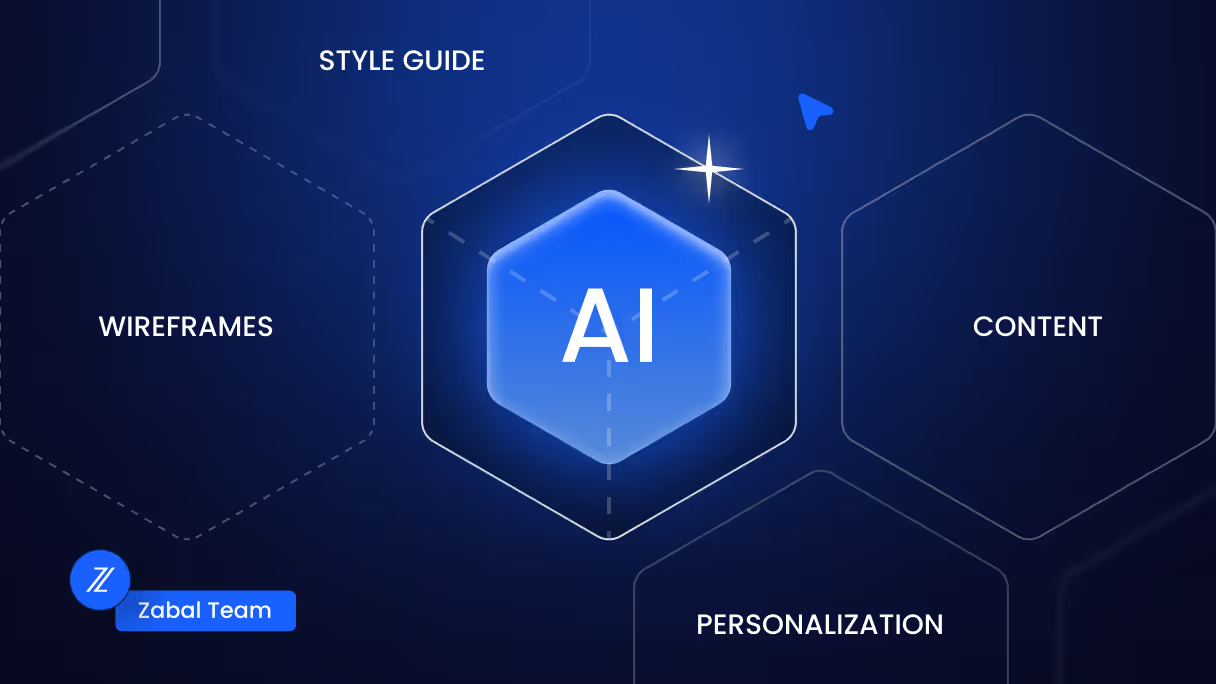
Here’s a breakdown of the major categories:
1. Generative Design Tools
Examples: Figma AI, Uizard, Galileo AI
- What they do: These platforms use AI to generate wireframes, UI layouts, and even color palettes in seconds. Instead of starting from a blank canvas, designers can explore multiple variations rapidly.
- Enterprise value: Great for early-stage prototyping, stakeholder buy-in, and speeding up iterative design workshops.
- Caution: Left unchecked, outputs risk looking generic. Without a strong brand strategy, every SaaS site starts to resemble the same template.
- TL;DR: Use them as accelerators for options, not replacements for creative direction.
2. AI Copy & Content Tools
Examples: Jasper, WriteSonic, ChatGPT
- What they do: Generate placeholder copy, test headlines, localize content into multiple languages, or brainstorm blog/article structures.
- Enterprise value: Marketing teams can speed up campaign launches by using AI for draft text or A/B headline testing. Jasper, for example, integrates with CMS workflows for enterprise scaling.
- Caution: [Prompt engineering] ChatGPT, especially, will not provide the layers of intelligence needed to properly research the considerations and inputs required to properly optimize content for both SEO and AEO. [Post-AI delivery] Content requires human review for compliance, tone of voice, and SEO accuracy. AI is still prone to hallucination.
- TL;DR: Excellent for iteration and speed, but basic AI tools lack the contextualization, research and prompt engineering to contain all the SEO/AEO considerations.
3. AI for Image & Asset Creation
Examples: Adobe Firefly, Midjourney, Canva AI, Figma AI
- What they do: Auto-generate illustrations, product renders, icons, and branded visuals. Firefly stands out for its enterprise-friendly licensing model, while Midjourney excels at high-quality concept art.
- Enterprise value: Creative teams can cut down on dependency on stock libraries while producing unique, on-brand visuals faster.
- Caution: Copyright/IP risks remain; teams must verify usage rights and brand fit.
- TL;DR: A must-have for speed, but best paired with human art direction.
4. AI Code & Automation Tools
Examples: GitHub Copilot, Webflow AI
- What they do: Generate or clean up code, suggest components, scaffold CMS structures, and even automate QA scripts. Webflow AI is particularly powerful for SaaS clients migrating from legacy systems like WordPress.
- Enterprise value: Speeds up development sprints, reduces manual coding, and helps teams scale enterprise websites faster.
- Caution: Copilot and similar tools sometimes introduce inefficiencies or insecure patterns that require human review.
- TL;DR: Strong productivity boost, but dev oversight is non-negotiable.
5. AI Analytics & Personalization Platforms
Examples: Mutiny, Optimizely AI, Webflow Optimize
- What they do: Use AI to recommend A/B tests, optimize headlines, and personalize user journeys based on behavior, persona, or region.
- Enterprise value: For SaaS brands, personalization is a key differentiator. McKinsey reports that companies that lead in personalization generate 40% more revenue than those that don’t.
- Why Webflow Optimize matters: As a Webflow Enterprise partner, Zabal Media integrates Optimize to help clients experiment and personalize directly in their Webflow ecosystem, avoiding clunky third-party setups.
- TL;DR: These platforms sit more in the AI for the Web category than pure design, but they’re critical for enterprise growth.
6. AI SEO Optimization Tools
Examples: SEMrush, Ahrefs, Surfer SEO
- What they do: Automate meta audits, suggest optimized titles and descriptions, generate ALT text for images, and provide AI-driven Answer Engine Optimization (AEO) scores.
- Enterprise value: AI SEO tools ensure beautiful designs are also discoverable, something enterprise SaaS brands can’t ignore. SEMrush and Ahrefs now include AI-powered scoring systems to predict SERP performance.
- Caution: Over-reliance can lead to keyword stuffing or tone mismatch. Human editorial input is essential.
- TL;DR: Design + SEO must be integrated. These tools help ensure accessibility and visibility go hand in hand.
Why This Matters
By broadening from “AI in Web Design” to “AI Across the Web Ecosystem”, we recognize that enterprise websites are more than visual design. They’re living systems: content engines, personalization platforms, and growth machines.
At Zabal Media, we see AI as a toolkit that:
- Accelerates early-stage design (wireframes, prototypes).
- Streamlines execution (code, CMS, asset generation).
- Enhances discoverability (SEO optimization).
- Maximizes ROI (personalization & testing).
But in every case, human oversight remains the safeguard for compliance, differentiation, and creative integrity.
AI in Web Design: Pros vs. Cons (Backed by 2025 Data)
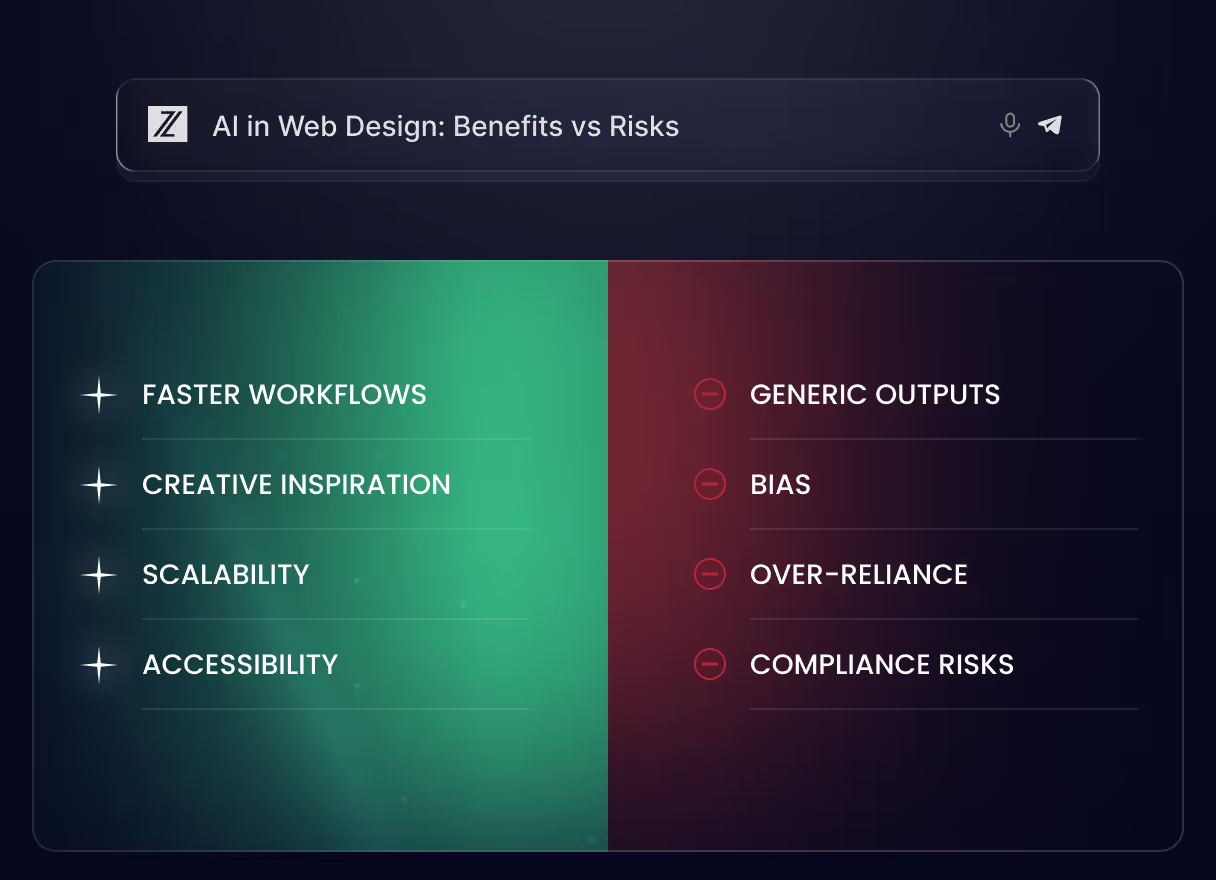
SaaS Use Cases: Where AI Helps vs. Where It Falls Short
.avif)
How to Evaluate AI Tools for Your Web Design Stack
Before adopting AI, SaaS, and enterprise teams should ask:
- Where are the bottlenecks? Copy, QA, or asset creation?
- Does it integrate with existing platforms? Webflow, Figma, CMS.
- Who reviews the output? Human oversight is essential.
- What are the risks? Privacy, compliance, accessibility, and IP protection must come first.
How Zabal Media Is Adopting AI Within Our Agency
.avif)
Most agencies talk about experimenting with AI. At Zabal, we’ve built a measured adoption framework that blends automation with enterprise-level governance. Because our clients are SaaS and B2B leaders, we treat AI as a partner in efficiency, not a shortcut.
- Design Acceleration with Oversight
We leverage tools like Figma AI and Galileo AI to produce wireframes and design variations in minutes. These accelerate ideation, but our creative team validates outputs for accessibility, differentiation, and alignment with brand identity. - Content Workflows with Editorial Control
ChatGPT and Jasper support placeholder text, localization, and A/B headline testing. Final copy always goes through human review to ensure tone, compliance, and SEO precision. - Enterprise Builds in Webflow
With Webflow AI, we speed up CMS scaffolding, component generation, and QA scripting. And because we’re a Webflow Enterprise Partner, we also integrate Webflow Optimize to help clients run AI-driven personalization and experimentation within the platform, avoiding clunky third-party integrations. - SEO Enhancements for Discoverability
Using SEMrush and Ahrefs, we run automated meta audits, alt-image text generation, and track emerging Answer Engine Optimization (AEO) scores. For clients, this means their enterprise websites aren’t just beautiful, they’re discoverable. - Governance and Risk Management
Every AI-assisted output undergoes QA for bias, accessibility, and security. We build compliance checkpoints into our workflows so that clients don’t face IP or privacy risks.
Our difference? Many agencies are chasing “AI hype.” At Zabal, we’re building repeatable, secure, and enterprise-ready AI workflows. That’s why clients trust us: we deliver speed without sacrificing creativity, compliance, or brand differentiation.
Ethical Considerations and Accessibility
AI introduces important ethical questions. Who owns AI-generated assets? What if the model was trained on copyrighted or biased data? Enterprises must establish clear policies to ensure compliance, IP protection, and inclusivity.
Accessibility is another frontier. AI-driven design must account for color contrast, screen reader compatibility, and inclusive language. Automated tools can help, but only human oversight ensures true inclusivity.
The Future of AI in Web Design
The role of AI in web design is just beginning to unfold. Over the next three to five years, its influence will deepen across every stage of digital experience, from initial site planning to real-time personalization. But the future will be shaped by two competing forces: opportunity and risk.
Smarter QA and Performance Pipelines
Generative AI will increasingly be embedded in quality assurance and performance testing. Instead of manual regression testing, AI can continuously monitor load times, accessibility, SEO compliance, and code quality. Gartner predicts that by 2027, over 70% of enterprise applications will include AI-powered testing and monitoring baked in (Gartner).
Deeper Webflow and Design Platform Integrations
Platforms like Webflow, Figma, and Adobe are racing to make AI a native part of the design stack. In practice, this means AI will handle tasks like generating CMS architectures, suggesting design variations, or automatically enforcing style guides. For enterprise clients, this could cut months from rollout timelines. Still, as Forrester cautions, automation is only valuable when it supports, not replaces, design discipline (Forrester).
AI for Governance and Brand Consistency
One of the most exciting frontiers is AI-powered governance. Instead of relying solely on manual brand reviews, enterprises will soon be able to deploy AI systems that scan thousands of web assets for consistency in typography, color usage, accessibility, and even tone of voice. This is particularly powerful for SaaS companies managing multi-region or multi-language websites.
Personalization at Scale
AI-driven personalization is set to become a defining differentiator. According to McKinsey, companies that lead in personalization generate 40% more revenue from those activities than their peers (McKinsey). Tools like Optimizely AI and Mutiny are already tailoring site experiences based on persona or region. In the future, this could evolve into real-time adaptive websites that adjust structure, content, and even navigation on the fly.
Ethical and Regulatory Evolution
With AI’s expansion will come new ethical, legal, and regulatory scrutiny. Governments and industry bodies are drafting frameworks around transparency, IP ownership, and accessibility. For enterprises, the message is clear: governance isn’t optional. Gartner emphasizes that by 2026, organizations that establish strong AI governance will outperform peers by 40% in AI adoption outcomes (Gartner).
Zabal Media’s Take on the Future
At Zabal Media, we believe the strongest brands will thrive in a hybrid future:
- Human-first, AI-assisted: Strategy, empathy, and creativity remain human strengths.
- Enterprise standards come first: Accessibility, compliance, and security can’t be compromised.
- Differentiation is non-negotiable: AI should support, not flatten, brand uniqueness.
The question isn’t whether AI will define the future of web design; it already is. The question is who will use it responsibly, strategically, and creatively enough to stand out.
.avif)
Zabal Media’s Point of View
At Zabal Media, we’re excited about AI, but we’re clear-eyed about its limitations.
- Human-first, AI-assisted: Strategy, empathy, and storytelling are human strengths.
- Enterprise standards matter: Accessibility, governance, and QA come first.
- Differentiation is non-negotiable: We design for uniqueness.
- Hybrid future: The strongest brands blend AI efficiency with human creativity.
Why This Matters to SaaS and Enterprise Brands
AI isn’t just about speed or cost savings. For enterprise clients, the real priorities are:
- Trust: Will the site pass compliance and security reviews?
- Differentiation: Does it stand out in a competitive SaaS landscape?
- Scalability: Can it grow with the business over time?
That’s where Zabal Media comes in: ensuring AI adds value without compromising what matters most.
Future-Proof Your Web Design
AI in web design isn’t a distant possibility; it’s here, and it’s reshaping how enterprise websites are built, optimized, and scaled. But the real question isn’t whether you’ll use AI. It’s whether you’ll use it responsibly, strategically, and in a way that protects your brand’s uniqueness, compliance, and growth.
At Zabal Media, we help SaaS and enterprise brands strike that balance. We blend AI acceleration with human creativity, governance, and oversight, so you never sacrifice differentiation, accessibility, or security for speed. The result? Enterprise-ready websites that scale, perform, and stand out in crowded markets.
Don’t settle for a generic “AI-made” site. Future-proof your most important digital asset with Zabal Media’s hybrid approach.
Zabal Media: Speed with strategy. AI with oversight. Creativity with compliance.
Frequently Asked Questions
What are the pros and cons of AI in web design?
Efficiency, scalability, and accessibility are pros. Generic outputs, compliance risks, and lack of differentiation are the main cons.
What AI tools are best for web design?
Figma AI, Adobe Firefly, and Webflow AI are among the most practical tools today.
Can AI replace web designers?
No. AI assists with workflows, but true brand strategy and creativity require human expertise.
Will AI eventually design entire websites?
Possibly, but without a human strategy, they will remain generic templates rather than enterprise-ready solutions.
Share this article
Zabal Journal
Related Content
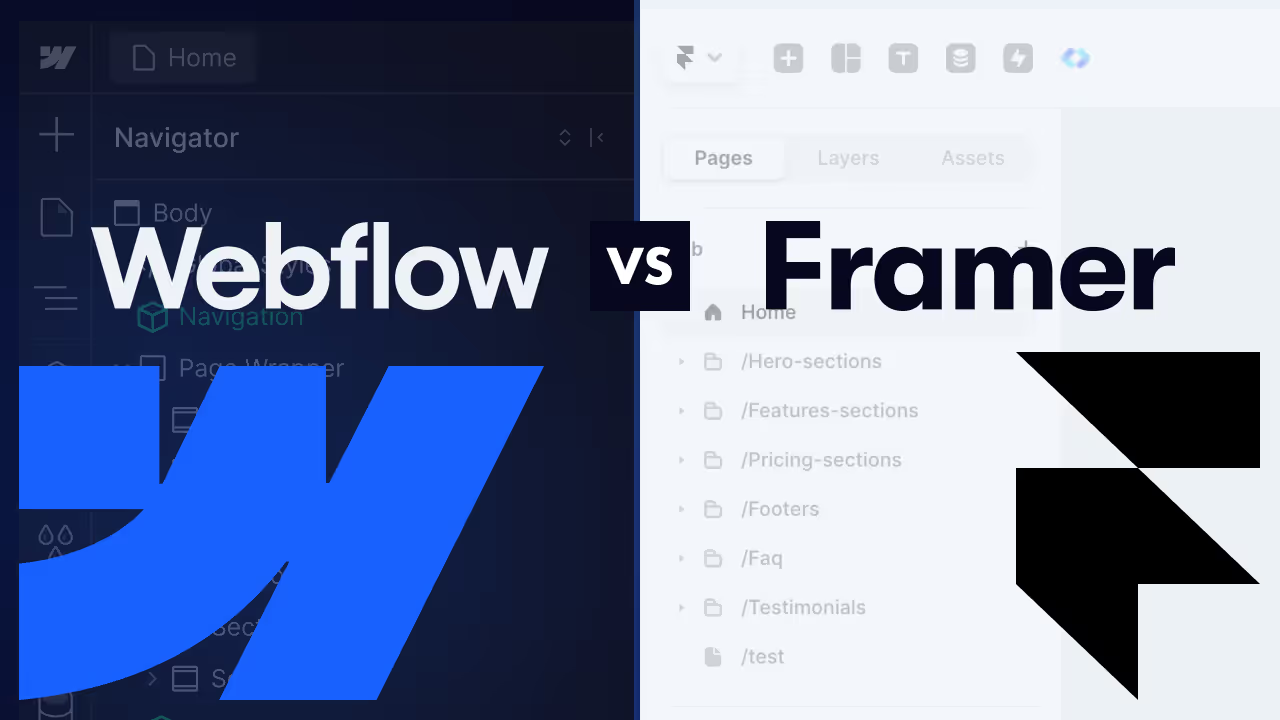
Webflow vs Framer: Which Platform Offers Better Design Flexibility
Webflow vs Framer: Which platform offers the best design flexibility, customization, and SEO? Compare features and make the right choice for your website!
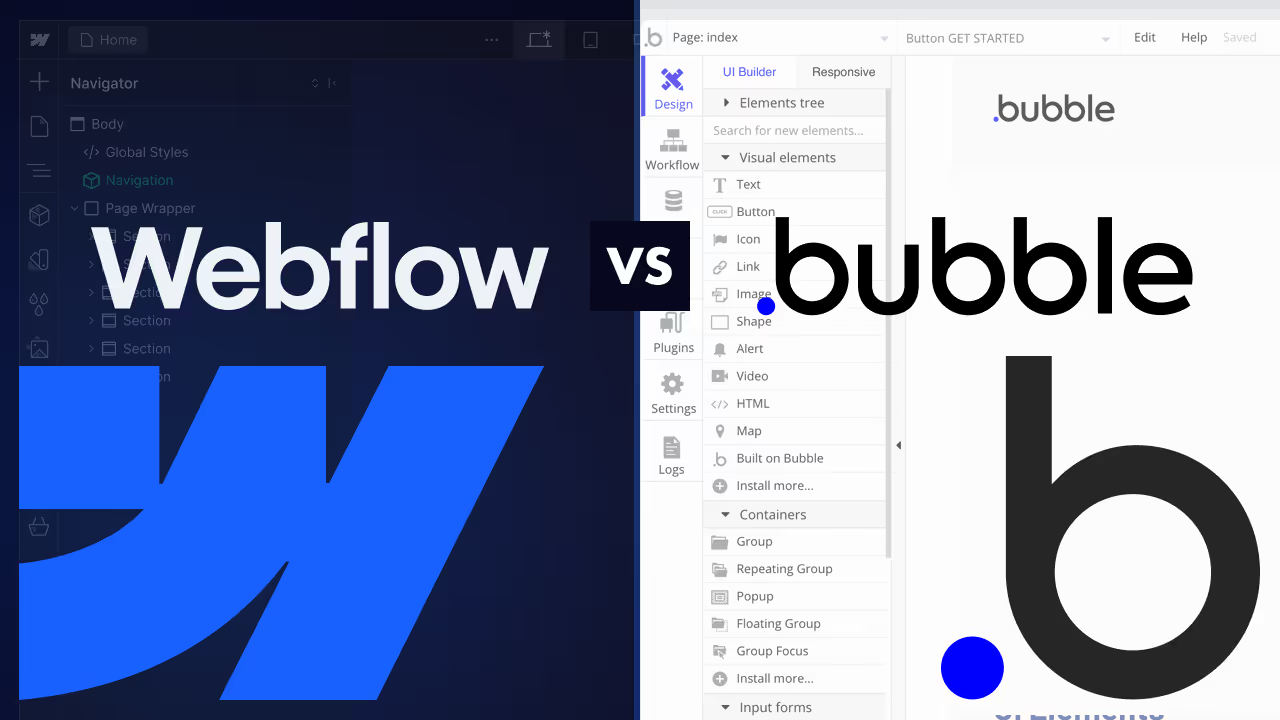
Webflow vs Bubble: Comprehensive Review for No-Code Solutions
Webflow vs Bubble: Which no-code platform is right for you? Compare design flexibility, data management, workflows, and pricing to make the best choice for your project.

Unlocking Cost Savings and Pipeline Growth: The ROI of Switching from Contentful to Webflow
How Loop.com Cut Costs and Increased Efficiency by Replatforming Their Website





